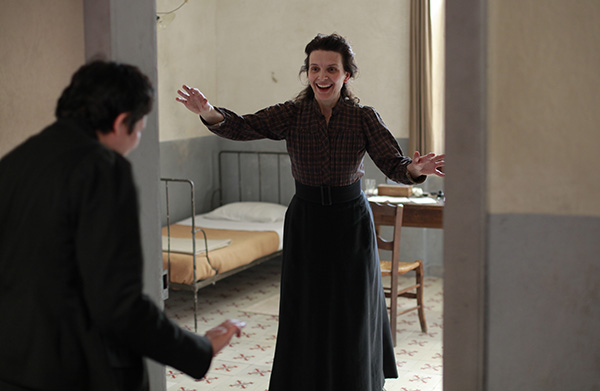
“Camille Claudel 1915” is a meditative and devastating examination of sanity, sexism and artistic silencing from new French extremism filmmaker Bruno Dumont. This provocateur’s new film serves as an account of a year in the life of sculptress Camille Claudel (Juliette Binoche), who was both student and lover of Auguste Rodin, and sister to Catholic poet and dramatist Paul Claudel (Jean-Luc Vincent). The titular year finds Camille in her middle age trapped in a mental institution where she’s been placed by her family.
Those familiar with Dumont’s films may find “Camille” slow or subtle, maybe less powerful than the director’s other work, but Binoche’s performance elevates the entire work. Her Camille Claudel is both a force and a victim, tragic and strong. She maintains Claudel’s innocence while constantly injecting enough insanity to keep the audience unsure of whether she actually belongs in an institution.
The institution is controversial because of Dumont’s decision to have its inhabitants and staff played by people who are actually mental patients and nurses. This casting decision certainly proves effective, as it alienates Camille from her surroundings — she is tormented by her co-inhabitants incessant, disruptive and antisocial behavior. However, one has to wonder if this effectiveness comes at the expense of the actors. While viewers may want to make a moral decision about Dumont’s cast, artistically the decision to include them produces an exceptional experience.
Vincent, meanwhile, portrays Paul with a calmness that provides a frustrating contrast to his sister. His few scenes strengthen the thematic depth of the film, including one of its most painful moments.
“Camille” is expertly crafted and rather pretty for such an ugly subject. One particular scene allows Camille to go outside as she confronts the beauty of the world previously taken from her. This break from claustrophobia is barely a relief — she is still surrounded by the loud and frantic mental patients. Whenever Camille tries to find her own privacy or peace, the other patients show up to both accidentally torment her and hold a mirror up to her own state of mind.
While Camille believes Rodin is trying to poison her and has occasional outbursts, the film suggests Camille is locked up simply for being an independent, strong-willed and artistic woman. Her family does not understand her. The doctors do not understand her. Society does not understand her. So she is locked up.
“Camille Claudel 1915” portrays a living hell — but does the sexism portrayed in the film live on? Camille would not be locked up were she alive in 2013, but the brutal judgment and lack of understanding could very well remain. Camille’s hell continues on today.
Drew Gregory is a staff writer. Email him at [email protected].











































































































































